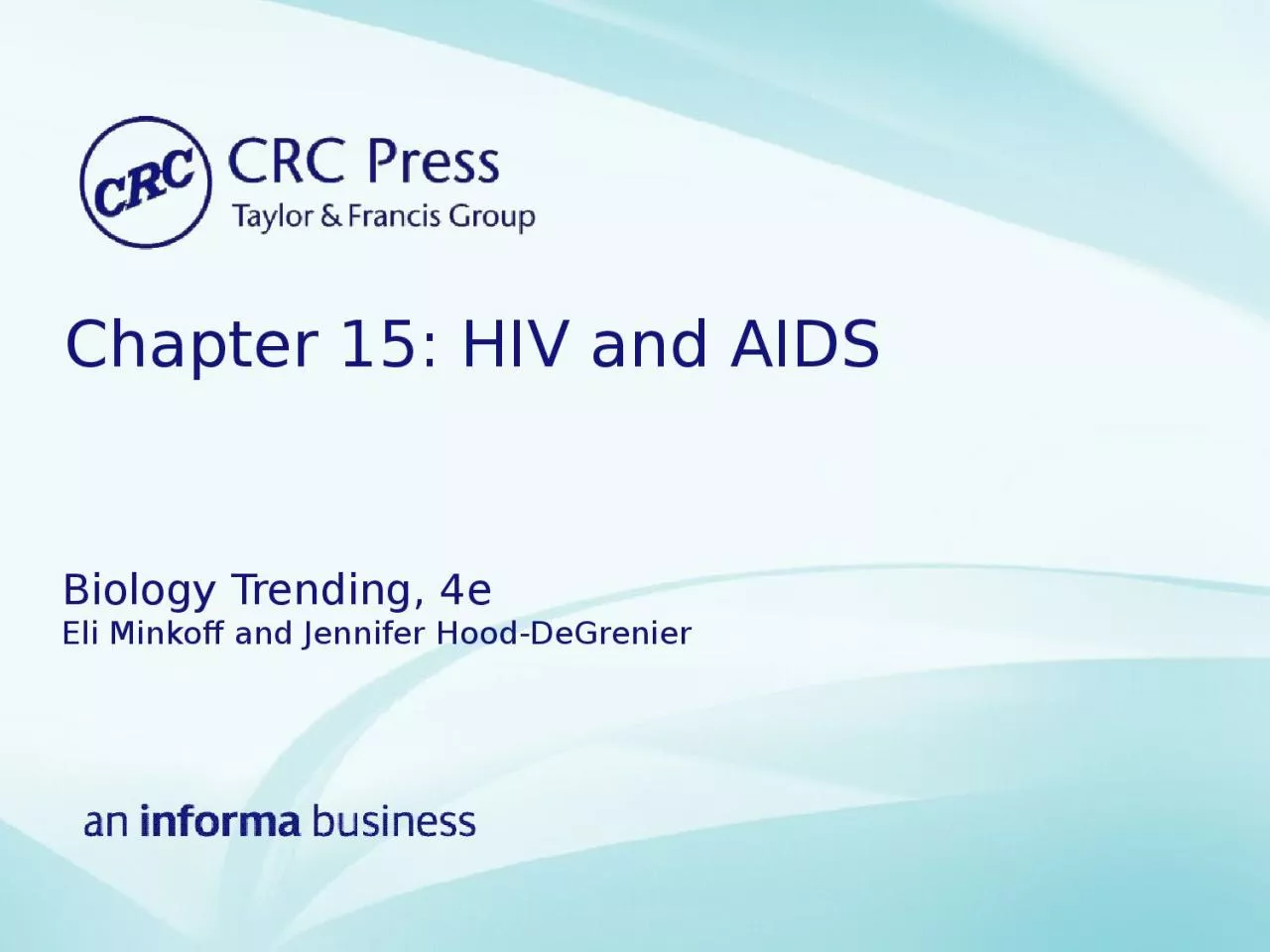

Biology Trending 4e Eli Minkoff and Jennifer HoodDeGrenier AIDS is an immune system deficiency AIDS is caused by a virus called HIV Discovery of the connection between HIV and AIDS Establishing cause and effect ID: 1042344
Download Presentation The PPT/PDF document "Chapter 15: HIV and AIDS" is the property of its rightful owner. Permission is granted to download and print the materials on this web site for personal, non-commercial use only, and to display it on your personal computer provided you do not modify the materials and that you retain all copyright notices contained in the materials. By downloading content from our website, you accept the terms of this agreement.
1. Chapter 15: HIV and AIDSBiology Trending, 4eEli Minkoff and Jennifer Hood-DeGrenier
2. AIDS is an immune system deficiencyAIDS is caused by a virus called HIVDiscovery of the connection between HIV and AIDSEstablishing cause and effectViruses and HIV
3. Figure 15.1 Interactions between lymphocytes and their cytokines.
4. Figure 15.2 The AIDS quilt, commemorating those who have died of AIDS. In 1999 the quilt had grown to be 42,960 panels commemorating 83,279 names.
5. Figure 15.3 The structure of HIV.
6. Figure 15.4 The retroviral life cycle.
7. Figure 15.5 HIV budding from a helper T cell. (A) Budding and mature HIV. The mature viruses are free of the cell; the viral protein can be seen inside the viral envelope (a piece of the cell membrane that the viruses have taken with them as they budded out). (B) Many HIV particles bud from the same cell.
8. HIV infection progresses in certain patterns, often leading to AIDSEvents in infected helper T cellsProgression from HIV infection to AIDSTests for HIV infectionA vaccine against AIDS?Drug therapy for people with AIDS
9. Figure 15.6 Many HIV particles emerging from a helper T cell. The dark circles are holes in the cell membrane left when the viruses bud out. These holes eventually kill the cell.
10. Figure 15.7 The course of HIV infection.
11. Figure 15.8 How the drug zidovudine (ZDV) interrupts the replication of the HIV virus.
12. Knowledge of HIV transmission can help you avoid infectionRisk factors: behaviours that may lead to infectionCommunicabilitySusceptibility versus high riskPublic health and public policyWorldwide patterns of infection
13. Figure 15.9 Routes of HIV transmission in the United States, based on statistics for the year 2018 from the Centers for Disease Control and Prevention (https://www.cdc.gov/hiv/risk/estimates/riskbehaviors.html). The percentages indicate the proportion of cases transmitted by each route.
14. Figure 15.10 Health care workers, researchers, and others who handle human blood must follow the Universal Precautions for Blood-Borne Pathogens.
15. Figure 15.11 HIV/AIDS in the different regions of the world recognized by UNAIDS. Circles and numbers in black show prevalence, the number of people living with HIV/AIDS in 2019. Numbers in red show the trend (or change) in incidence (number of new cases per year) from 2000-2017.